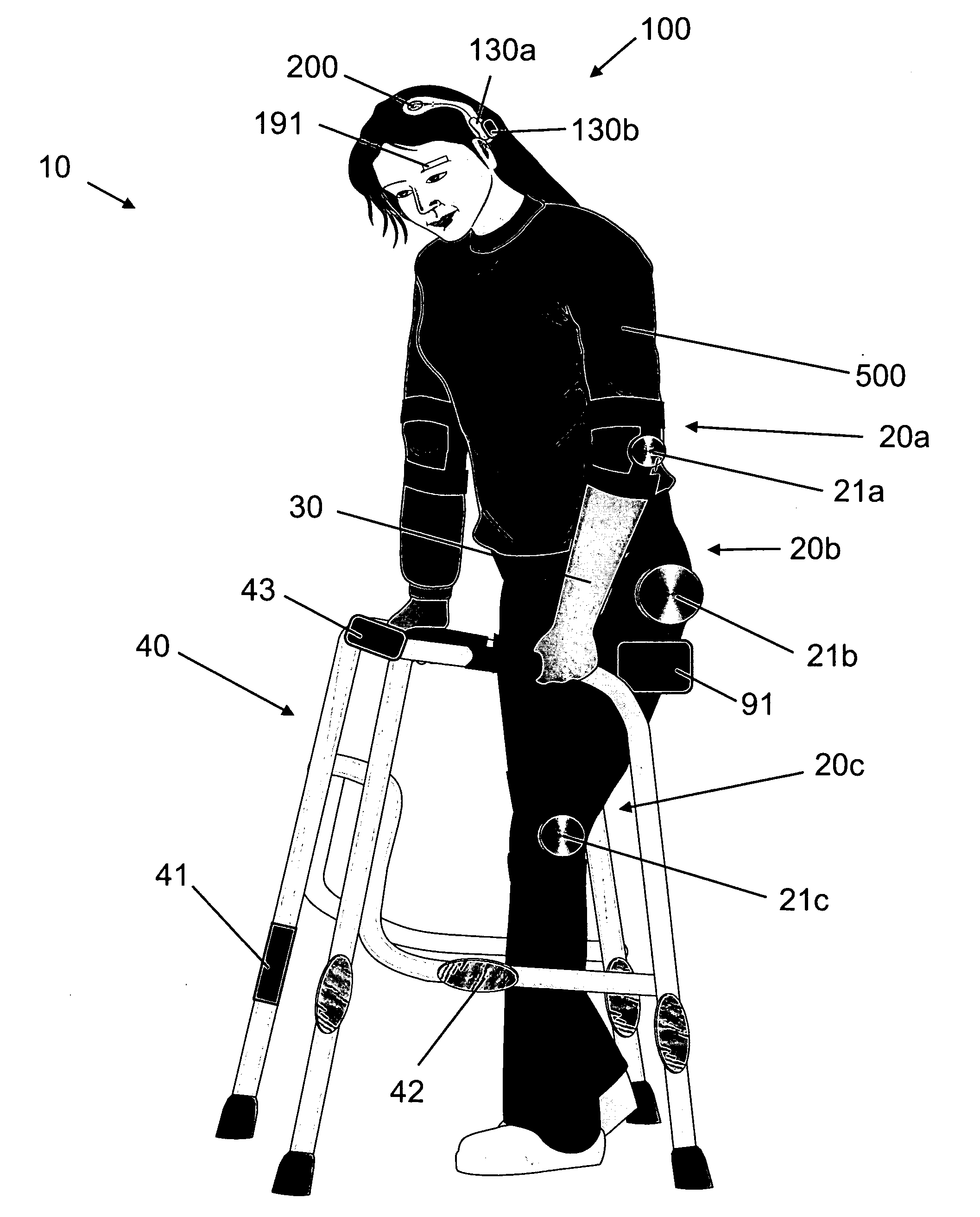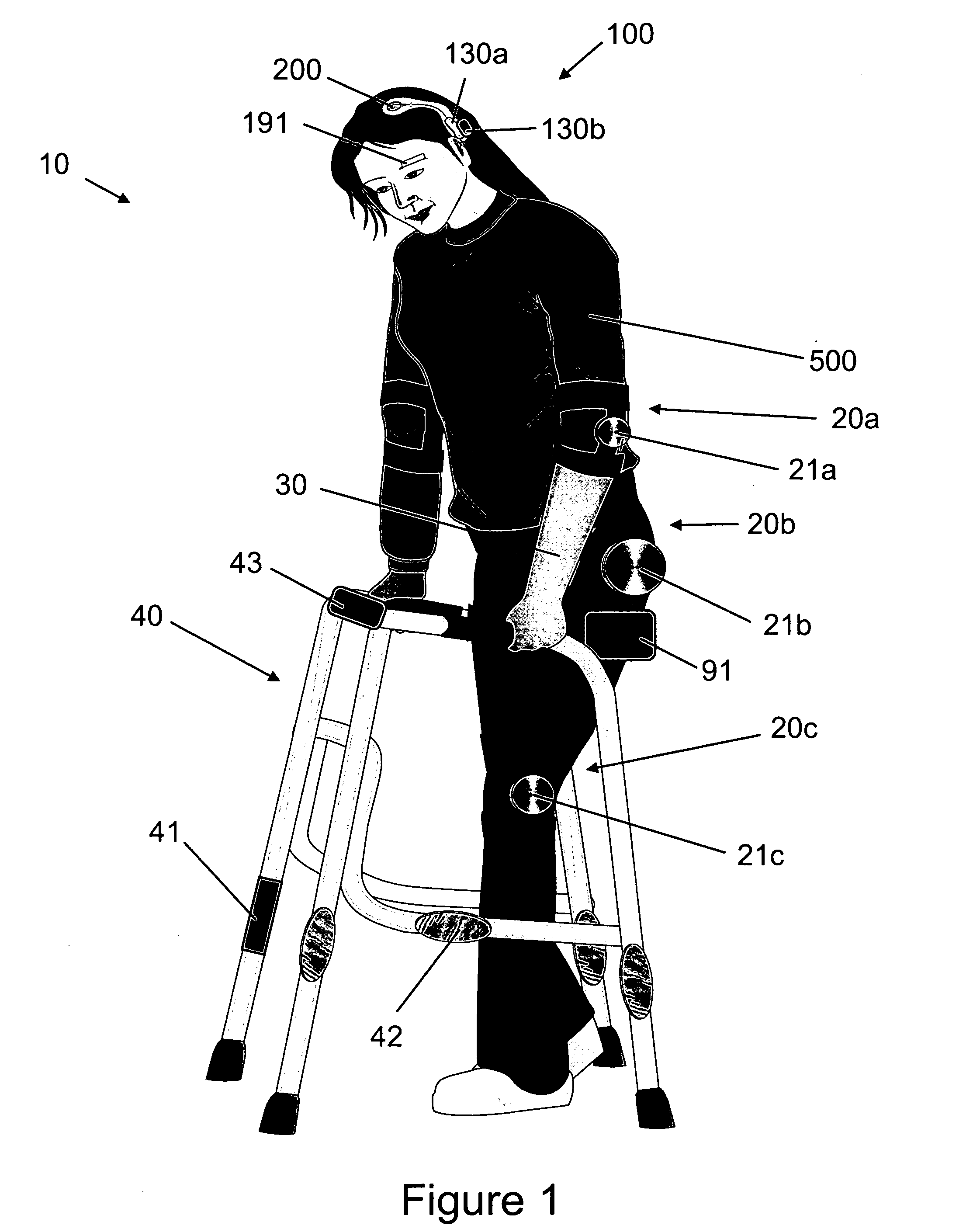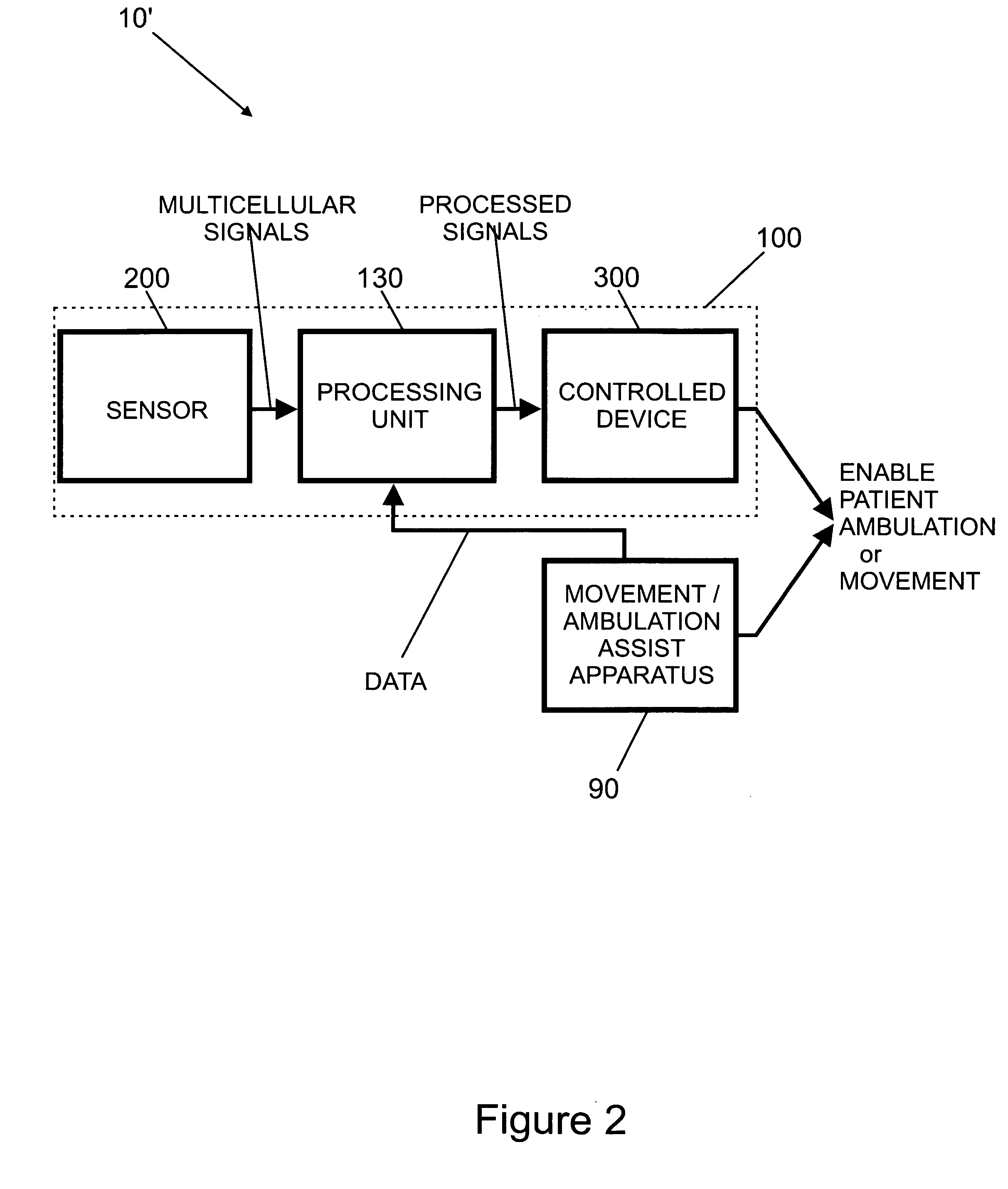Multi-device patient ambulation system
a multi-device, patient technology, applied in the field of medical devices, can solve problems such as major problems such as the inability to identify and obtain stable electrical signals of adequate amplitude, and the inability to control external prostheses early on, and achieve the effect of improving performance and safety
- Summary
- Abstract
- Description
- Claims
- Application Information
AI Technical Summary
Benefits of technology
Problems solved by technology
Method used
Image
Examples
Embodiment Construction
[0023] To facilitate an understanding of the invention, a number of terms are defined immediately herebelow.
Definitions
[0024] As used herein, the term “biological interface system” refers to a neural interface system or any system that interfaces with living cells that produce electrical activity or cells that produce other types of detectable signals.
[0025] The term “cellular signals,” as used herein, refers to signals or combination of signals that may emanate from any living cell, such as, for example, subcellular signals, intracellular signals, and extracellular signals. For example, “cellular signals” may include, but not be limited to: neural signals (e.g., neuron action potentials or spikes, local field potential (LFP) signals, electroencephalogram (EEG) signals, electrocorticogram signals (ECoG), and signals whose frequency range falls between single neuron spikes and EEG signals); cardiac signals (e.g., cardiac action potentials); electromyogram (EMG) signals; glial cel...
PUM
 Login to View More
Login to View More Abstract
Description
Claims
Application Information
 Login to View More
Login to View More - R&D
- Intellectual Property
- Life Sciences
- Materials
- Tech Scout
- Unparalleled Data Quality
- Higher Quality Content
- 60% Fewer Hallucinations
Browse by: Latest US Patents, China's latest patents, Technical Efficacy Thesaurus, Application Domain, Technology Topic, Popular Technical Reports.
© 2025 PatSnap. All rights reserved.Legal|Privacy policy|Modern Slavery Act Transparency Statement|Sitemap|About US| Contact US: help@patsnap.com



